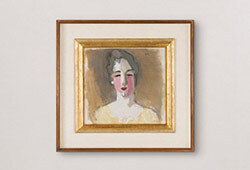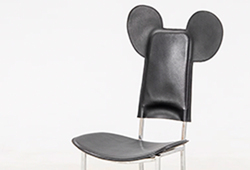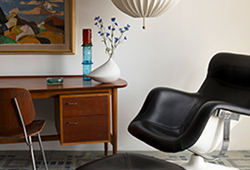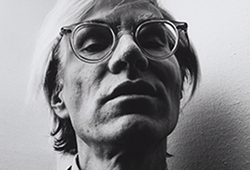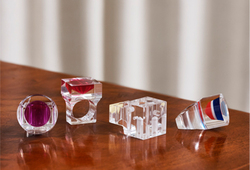Victor Vasarely
”Sixton”
Signed Vasarely, also signed and dated verso. Conceived in 1967 and painted 1987. Numbered P 1281 verso. Canvas 112 x 112 cm.
Provenance
Gerschman's art dealer, Stockholm, acquired 1987. With the purchase a book (VASARELY III
Propos liminaires de Marcel Joray, Editions du Griffon, 1974) with a personal dedication to the present seller by Vasarely was included (not included in this lot).
Private collection, Sweden.
More information
Victor Vasarely’s oeuvre is today more up to date than ever. The vivid colours of his geometric patterns are elements of artistic design – as are the strong contrasts of his black-and-white painting. The visual effects created by hand by Vasarely in the mid-20th century anticipated the aesthetics of today’s computer games and digital art.
Vasarely started to systematically explore the optical and emotional range of the various graphic techniques when he worked as graphic designer in Paris in the 1930s. This led to a fascination with the geometric form and its ability to evoke a sensory perception of space, matter, and energy. Vasarely developed his own form of geometric abstraction which he varied endlessly, creating different optical patterns with kinetic effect. While supporting himself and his young family he created many works including Zebra (1937), which is considered by some to be one of the earliest examples of Op Art. He considered colour and form to be inseparable and geometric shapes were arranged in fluorescent colours in such a way that the eye perceived a fluctuating movement.
The painting “Sixton” from 1967 is an example from Vasarely’s exploration of the hexagon in the late 60s. He abandoned the square for some time to delve into the effect of perspective on the cube. The classic, or Renaissance perspective, with vanishing lines and a horizon, records what the eye perceives of the world around us. Instead, he chose the parallel or axonometric perspective in which the vanishing point does not exist. The edges of a cube, as an example, remain parallel. In “Sixton” the cubes are axonometric, formed by a square and two lozenges, thus creating an irregular hexagon. The characteristic of these cubes is their indiscipline and their independence. The cubes constantly modify the surface of the painting, creating an endless illusion of movement by rising in relief or falling back in the hollows. This effect is reinforced by a play of colour and light on the surface of each cube.
By the early 1970s, Victor Vasarely was everywhere. Regarded as the ‘grandfather’ of Op Art, the Hungarian-French abstract artist, then in his late sixties, had watched his pioneering geometric designs and hypnotising optical illusions come to represent his generation. Vasarely’s carefully calibrated patterns of luminous squares and circles was the hottest of hot demands.





